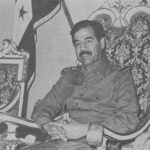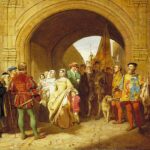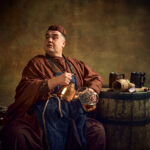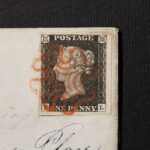Historical ‘Monsters’ Who Had Surprisingly Mundane Hobbies
- Jennifer Still
- May 25, 2025
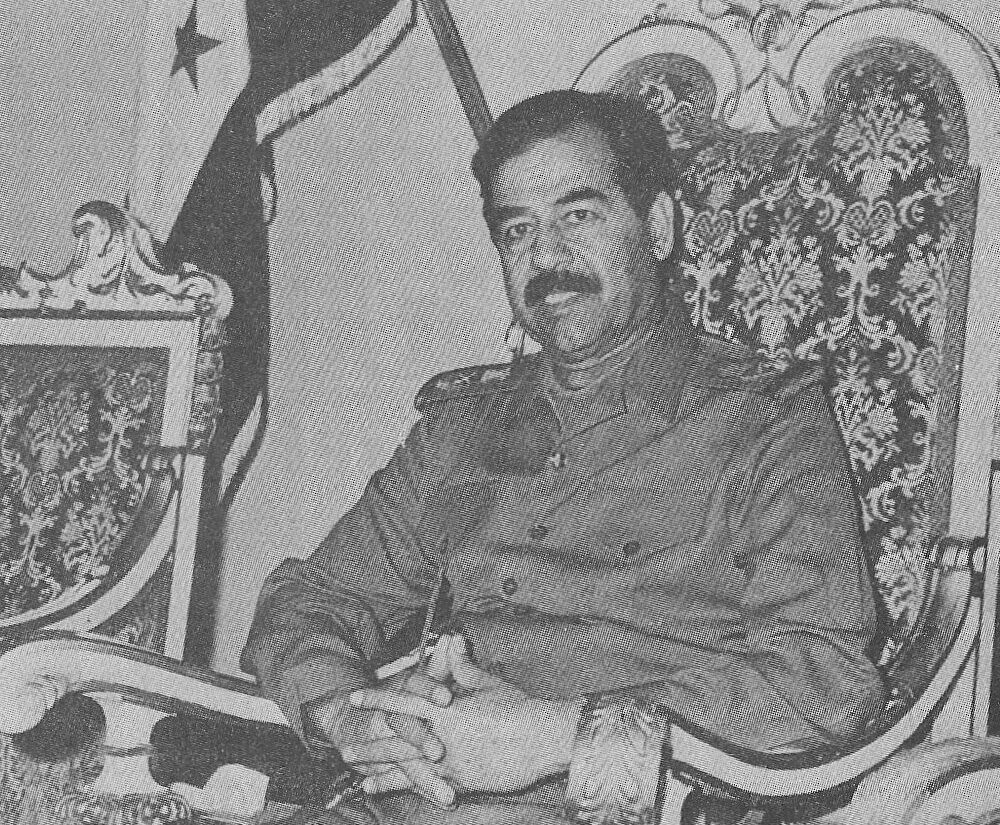 Iraqi News Agency, Public domain, via Wikimedia Commons
Iraqi News Agency, Public domain, via Wikimedia CommonsHistory tends to focus on the horrors committed by tyrants, despots, and infamous leaders. Obviously, that’s fair enough—when someone is responsible for mass suffering, that tends to dominate the story. However, behind the titles and atrocities, some of these historical figures had oddly everyday pastimes. It doesn’t make them less monstrous, but it does make them feel unsettlingly human. Here are some of the worst people in history, and the strangely ordinary things they liked to do in their spare time.
Adolf Hitler loved painting watercolours.
Before becoming the face of 20th-century evil, Hitler seriously wanted to be an artist. In his youth, he applied to the Academy of Fine Arts Vienna—twice—and was rejected both times. He spent his early twenties painting landscapes, cityscapes, and buildings, mostly in watercolour. Many of his works have survived and even been auctioned off (with considerable controversy).
He kept painting even during his early political years. While some historians argue his lack of artistic success played into his bitterness and sense of rejection, it’s disturbing to imagine the same man who ordered genocide once quietly painted flowers and old European buildings. His artistic ambitions are well documented—see this piece from the New Yorker for a deeper look.
Joseph Stalin wrote poetry.
Long before he became the Soviet Union’s brutal dictator, Stalin was a published poet. Under the pen name Soselo, his romantic verses were featured in respected Georgian literary journals. He wrote about nature, love, and the soul in a flowery, lyrical style that’s completely at odds with the violence of his later rule.
Even after becoming a political figure, he reportedly recited poetry from memory and appreciated literature. Some Georgian schoolbooks even featured his poems until the 1950s. The contrast between the gentle tone of his writing and the cruelty of the purges is jarring, and all the more disturbing for its sincerity. You can read translated selections of his poetry in scholarly collections like Stalin: A Biography by Robert Service.
Saddam Hussein wrote romance novels.
The former Iraqi dictator didn’t just rule with an iron fist. He also dabbled in fiction. Saddam wrote several novels, often blending political allegory with patriotic themes, but one of the strangest was Zabibah and the King. Published anonymously in 2000, the book features a noble ruler who falls in love with a beautiful commoner. The story is full of symbolism, and many believe the characters represent Hussein himself and the Iraqi people.
The book became a bestseller in Iraq, mostly because it was mandatory reading in some circles, and was even adapted into a television series. It’s a bizarre insight into how Hussein saw himself, blending propaganda with melodrama. Scholars have studied his writing as part of broader research into authoritarian propaganda.
Benito Mussolini played the violin.
Mussolini was many things: fascist dictator, propaganda expert, and wartime ally of Hitler. But he was also a competent violinist. He took music lessons as a child, and by his teens was reportedly good enough to consider a professional path in music. While his political life quickly overtook any musical ambitions, he continued to play throughout his life.
Mussolini believed in the power of the arts and tried to use music as part of his nationalistic messaging. He also used concerts and cultural events to present a more refined image to international audiences. It’s a strange image—the bombastic public speaker alone in a room, bowing over strings.
Heinrich Himmler bred chickens.
As one of the chief architects of the Holocaust, Himmler’s name is synonymous with cruelty. But bizarrely, he had a fascination with agriculture, particularly poultry. Before rising through the Nazi ranks, he studied agronomy and worked on a chicken farm. Even as he oversaw horrific policies, he remained obsessed with efficient chicken breeding.
He reportedly kept detailed records of poultry yields and believed that farming held moral and nationalistic value. His agricultural interests were part of a broader Nazi fixation on returning to the land, but in Himmler’s case, the contrast between his bureaucratic brutality and his tender attention to livestock is almost too strange to process. The U.S. Holocaust Memorial Museum includes reference to his early agricultural background.
Pol Pot loved photography.
Pol Pot, the leader of Cambodia’s Khmer Rouge regime, had a calm public persona that belied the scale of violence under his rule. One of his lifelong interests was photography. He enjoyed taking portraits and landscape shots, particularly of rural scenes and traditional Khmer life. It tied into his ideological vision of an agrarian utopia, which would eventually be used to justify horrific policies.
Some of the few surviving photos from his personal collection show an eerie disconnect between his artistic eye and his political choices. His photographs idealised the countryside, even as his regime forced millions into rural labour camps, where many died.
Kim Jong-il was obsessed with cinema.
North Korea’s late leader Kim Jong-il was notorious for his brutal regime, but he was also a massive film buff. He reportedly had a library of over 20,000 films and wrote extensively about cinema. In 1973, he published On the Art of the Cinema, which became the guiding text for North Korean filmmakers.
His obsession went so far that he orchestrated the kidnapping of South Korean director Shin Sang-ok and his actress wife, forcing them to make propaganda films for the North. Kim’s belief in the power of storytelling was genuine, and his use of film as a political tool has been studied in academic circles. See this BBC feature for the full story.
Idi Amin was a keen swimmer and boxer.
Before he became dictator of Uganda, Idi Amin had a background in sport. He was a champion swimmer and boxer during his time in the British colonial army. Known for his physical strength and imposing figure, he reportedly continued swimming throughout his presidency and took great pride in his athletic abilities.
His sporting past was used in propaganda to project vitality and control, but it also gave him a sense of pride outside of politics. In public appearances, he sometimes boasted of his boxing matches as proof of his strength, both physical and political.
It’s not that these hobbies make the people behind them more sympathetic—they don’t.
However, they do offer a strange window into how someone capable of extraordinary cruelty can still take comfort in the ordinary. Painting, playing music, writing fiction—these are all things we associate with creativity and humanity. That makes the dissonance more jarring.
These stories challenge the idea that historical “monsters” are entirely separate from the rest of us. It’s easier to imagine evil as a different species. It’s harder, but more important, to understand that ordinary pleasures and unimaginable violence can exist in the same person. Looking at their hobbies doesn’t soften the horror—it sharpens it.
